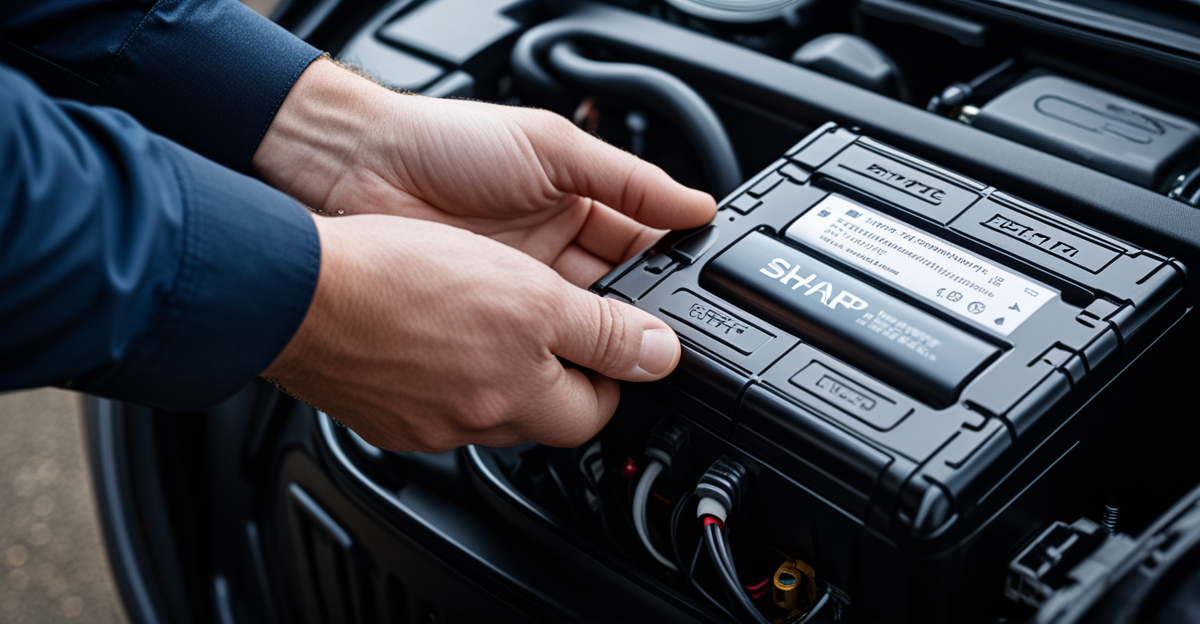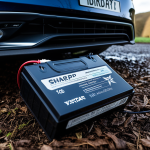Actionable Strategies for Extending Battery Life in British Plug-In Hybrids
Understanding how to maximize battery longevity UK is essential for any plug-in hybrid owner aiming to preserve performance and extend the lifespan of their vehicle’s battery. Daily driving habits play a crucial role in this process. For example, avoiding abrupt acceleration and heavy braking reduces strain on the battery and improves overall hybrid efficiency. Consistent moderate speeds help maintain a steady discharge and recharge cycle, which supports better battery health over time.
Maintaining optimal charge levels is another pivotal strategy. Experts recommend keeping the battery charge between 20% and 80%, as this range minimizes stress on battery cells. Fully charging to 100% or letting it deplete below 10% regularly can accelerate degradation. Plug-in hybrid maintenance in the UK often involves setting up charging schedules to manage these thresholds effectively, balancing daily travel needs with battery preservation.
A voir aussi : The Complete Guide to Cleaning and Caring for Alloy Wheels on Your British Car: An In-Depth Step-by-Step Manual
Scheduling regular system checks and updates with UK-certified service providers ensures that the battery management system remains calibrated and optimized. These service visits allow for diagnostic scans that detect early signs of battery wear and help maintain hybrid efficiency. Certified technicians can provide tailored advice based on specific vehicle data, helping owners avoid common pitfalls that shorten battery life.
Incorporating these actionable strategies—mindful driving, managing charge levels, and proactive maintenance—creates a strong foundation for maximizing battery health in British plug-in hybrids, leading to reduced replacement costs and sustained eco-friendly driving.
Sujet a lire : Essential Blueprint for Replacing Spark Plugs in High-Performance British Engines: Unleash Peak Power and Efficiency
Expert-Recommended Charging Practices for Peak Efficiency
Maximising hybrid efficiency with smart charging choices
Optimal hybrid charging best practices are crucial for sustaining battery longevity UK owners seek. Timing your plug-in hybrid charging in alignment with the UK’s climate can greatly influence battery health. For instance, charging during off-peak electricity hours, typically overnight, benefits both battery care and energy costs. Charging at cooler temperatures, common overnight in the UK, reduces thermal stress on battery cells, further extending their lifespan.
Avoiding frequent use of fast-charging methods is vital. While fast-charging offers convenience, it generates additional heat that accelerates battery degradation. Experts recommend limiting rapid charge sessions to occasional use rather than a daily routine. This balance preserves battery longevity UK drivers need for consistent hybrid efficiency.
Home charging setup also matters deeply. Selecting the right socket type—ideally one compliant with UK safety standards—ensures stable power delivery without risking surges. Implementing a scheduled charging routine with smart meters can automate charging within optimal timeframes, maintaining charge levels typically between 20% to 80%, as advised for plug-in hybrid maintenance. Such controlled charging reduces strain and supports sustained hybrid efficiency tips.
By adhering to expert charging advice tailored for UK conditions, plug-in hybrid owners can safeguard battery health and enjoy reliable performance over time.
UK-Specific Maintenance Routines for Long-Term Battery Health
Maintaining battery health in British plug-in hybrids demands routines tailored to the UK’s unique climate. Seasonal adjustments are essential since cold, damp winters and mild summers affect battery chemistry differently. During colder months, reduced temperatures slow chemical reactions inside the battery, potentially decreasing hybrid efficiency and accelerating degradation if not managed properly. Hence, seasonal care includes keeping the vehicle in a garage or sheltered area to avoid unnecessary exposure to frost and moisture.
Regular battery health checks by UK-certified technicians are indispensable. These experts utilize advanced diagnostic tools to monitor battery performance and identify early signs of wear or imbalance in cells, well before noticeable issues surface. This proactive approach aligns with effective plug-in hybrid maintenance, ensuring timely software updates and recalibrations that enhance battery longevity UK drivers rely on.
In periods of low vehicle use, such as seasonal storage during winter holidays, proper preparation is critical to prevent battery drain. Maintaining a moderate state of charge around 50% and avoiding full depletion safeguards against capacity loss. Additionally, scheduling routine check-ups at trusted service centres assures the battery management system remains optimized, preserving performance for the long term.
By integrating climate-conscious practices with routine professional inspections, UK hybrid vehicle maintenance can significantly extend battery life, supporting consistent hybrid efficiency tips while reducing unexpected failures.
Common Mistakes Owners Make and How to Avoid Them
Avoiding hybrid ownership pitfalls is critical for sustaining battery longevity UK drivers expect. One frequent mistake is over-charging the battery to 100% or letting it run too low. Doing so repeatedly strains battery cells, accelerating degradation and causing a noticeable drop in hybrid efficiency. Maintaining charge levels within the recommended 20% to 80% range is essential to prevent premature battery wear and support consistent performance.
Delaying routine maintenance or ignoring manufacturer updates also jeopardizes battery health. The software that manages battery use and protects its integrity requires regular updates to optimize charging cycles and thermal management. Skipping these updates or postponing scheduled service reduces the effectiveness of plug-in hybrid maintenance efforts and can lead to unexpected efficiency loss.
Neglecting the UK’s climate impact is another common error. Battery performance suffers if exposed to extreme temperatures without adequate adaptation. For example, failing to shelter the vehicle during cold, damp winters increases moisture-related degradation risks. Ignoring seasonal storage protocols, such as maintaining moderate charge during inactivity, further compromises battery capacity. Awareness of climate’s effect on battery care—paired with proactive steps—helps avoid efficiency loss and prolongs the battery’s usable life.
Owners can prevent these pitfalls by sticking to hybrid efficiency tips focused on balanced charging, timely maintenance, and climate-conscious care. This approach ensures their plug-in hybrid performs reliably while safeguarding battery health in the long term.
Actionable Strategies for Extending Battery Life in British Plug-In Hybrids
Enhancing battery longevity UK demands deliberate habits and maintenance rituals tailored for plug-in hybrids. One critical factor is adopting daily driving habits that safeguard battery health. Smooth acceleration and controlled braking reduce abrupt energy demands, which in turn maintains hybrid efficiency over time. Gentle driving avoids stressing battery cells, helping to sustain optimal power delivery and reducing premature wear.
Maintaining optimal charge levels is equally pivotal. Consistently charging within the recommended 20% to 80% range protects battery integrity by minimizing stress on cells during charge and discharge cycles. Plug-in hybrid maintenance routines in the UK often incorporate scheduling tools or charging reminders to prevent overcharging or deep discharges, both of which can accelerate battery degradation.
Regular system checks by UK-certified professionals are indispensable for maintaining battery health. These technicians conduct diagnostic scans and software updates to ensure the battery management system remains calibrated. Such updates optimise charging protocols and thermal controls, crucial elements for preserving hybrid efficiency. Proactive maintenance detected through these checks can preempt many common battery issues before they impact vehicle performance.
By combining hybrid efficiency tips—careful driving, managing charge levels, and scheduling consistent service—owners enhance battery longevity UK models rely on. This comprehensive approach balances everyday practicality with long-term battery preservation, contributing to sustainable, cost-effective plug-in hybrid ownership.









